By Dan Weisz
This year I’ve had the good fortune of seeing a nice, new (for me) wintering bird on a few different occasions. Lawrence’s Goldfinches winter in southern Arizona but they have eluded me in the past. One morning recently I was walking along the Rillito River with friends and had a good look at a Lawrence’s Goldfinch. Although the bird is soft in this picture, I like the effect of the leaves surrounding him.
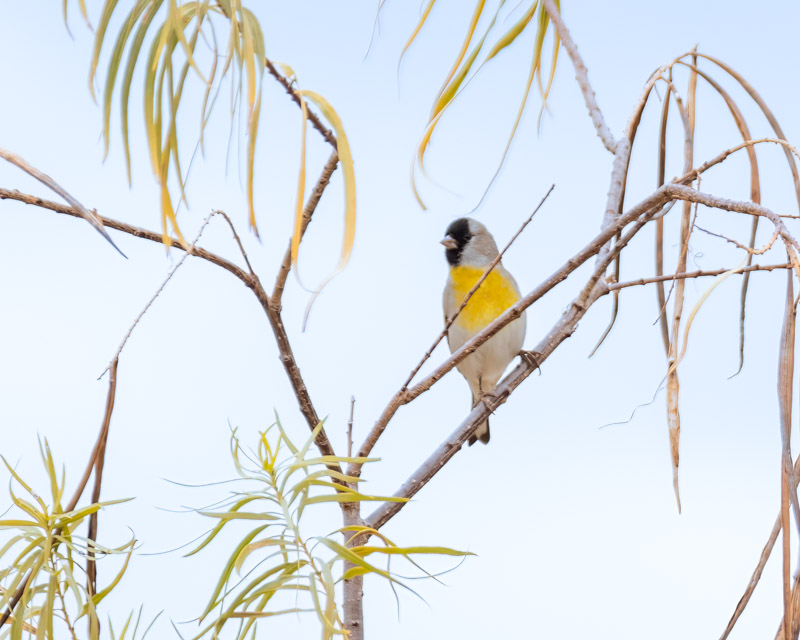
Then, last week I went to Fort Lowell Park and was able to spend quite a bit of time with a flock of Lawrence’s Goldfinch. It was exciting to see them and to get some nice photos. The birds were very active and seemed to be in non-stop motion. Below is a male who came down to a small puddle of water at the base of a fruiting tree near the pecan orchard in the park. The brightness of the yellow in his wings is striking!
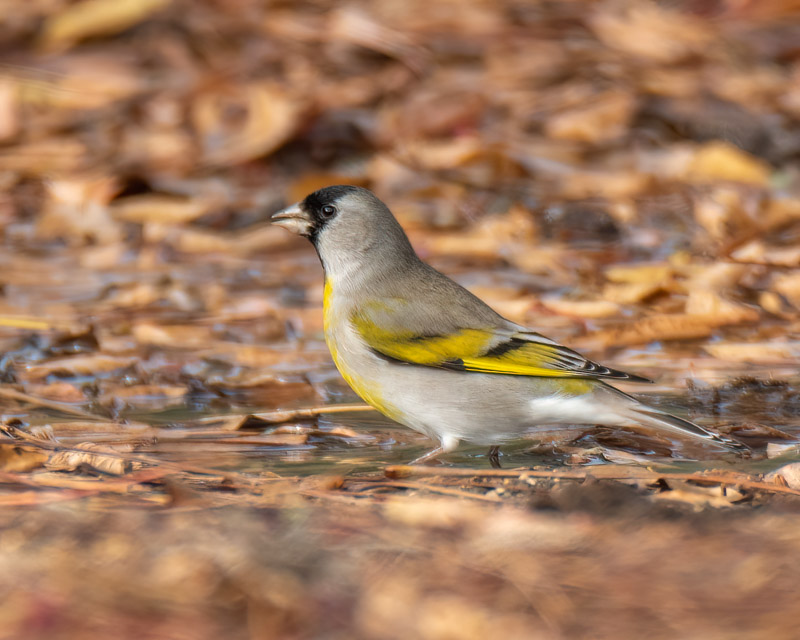
Lawrence’s Goldfinch are very attractive songbirds. The males are a soft gray with a black face. They have quite a bit of lemon yellow on their belly and in their wings. Those of you with nyjer seed feeders (thistle seed) have Lesser Goldfinches at your feeders. Lesser Goldfinches have the same colors but in a very different pattern and Lawrence’s are larger birds with much brighter yellows.
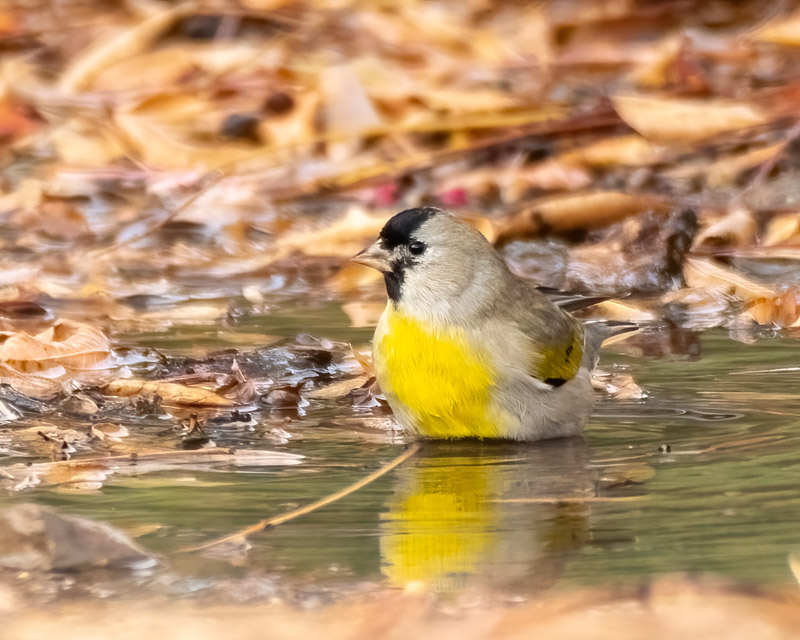
Here, a group of Lawrence’s are bathing. There are two males and two female (or perhaps immature male) birds.
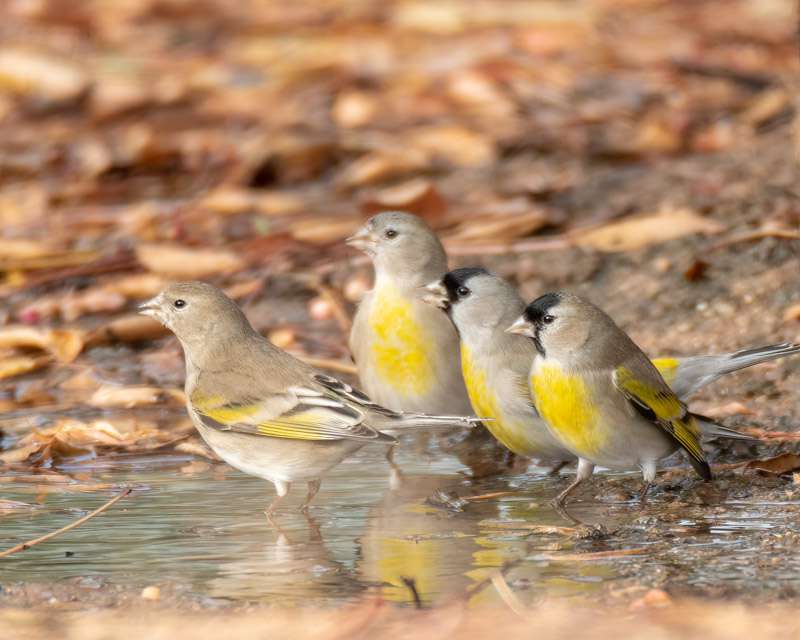
A male Lawrence’s Goldfinch perched high in the tree.
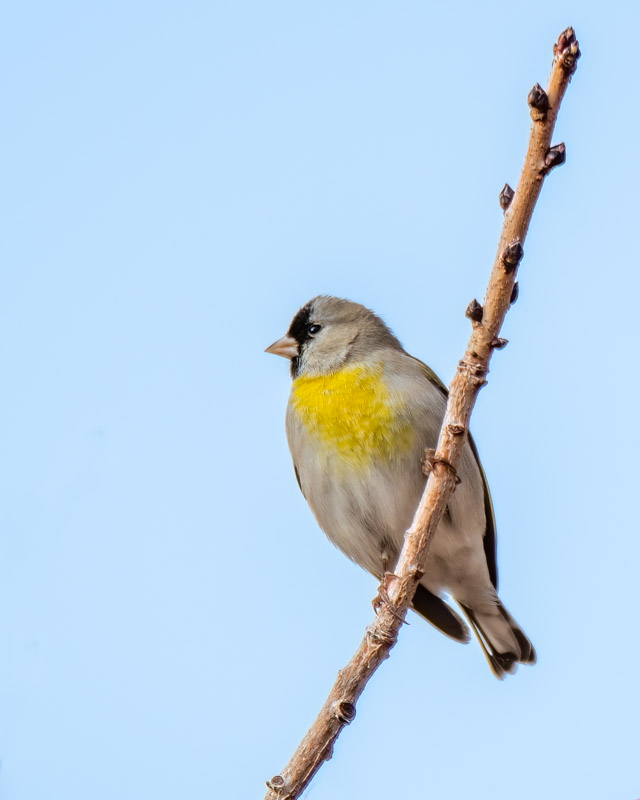
This is a range map of Lawrence’s Goldfinch. When you think of “birds migrating for the winter”, you think that they fly south. This is a case of birds flying to the east for the winter!
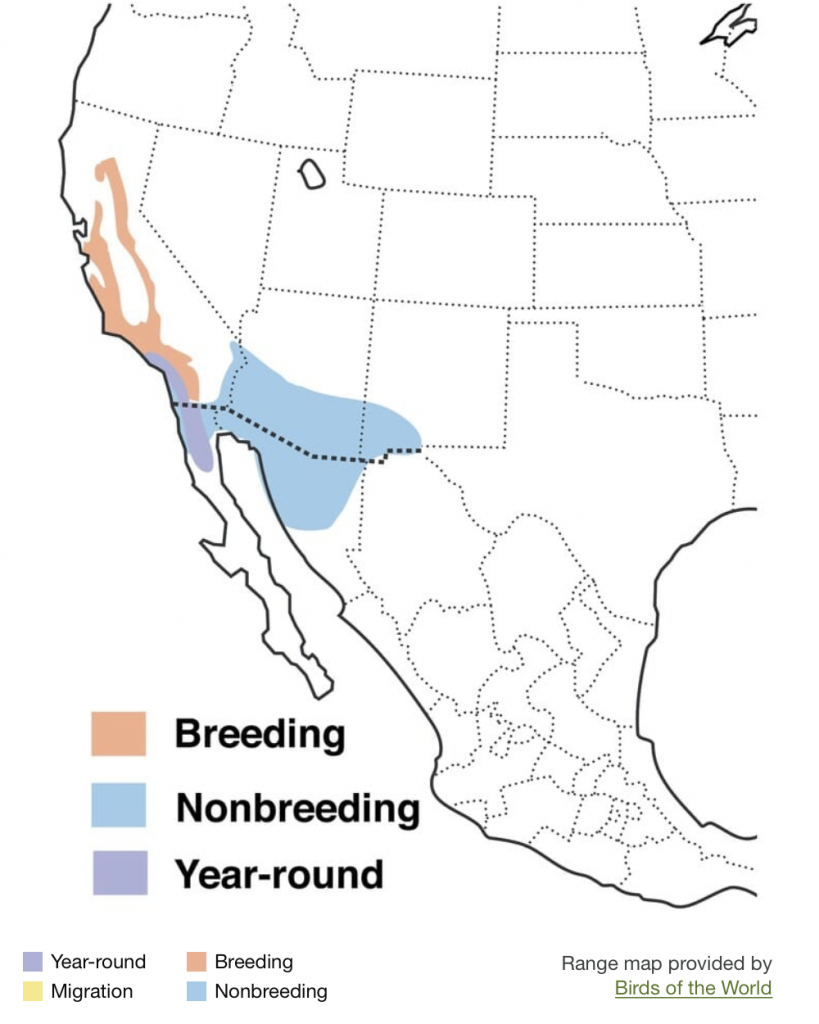
It was a very cold morning and one Lawrence’s puffed out its feathers to stay warm while perched. (Think of that down jacket you just pulled out of the closet!) There were clouds moving across the sky which caused variable temperatures and lighting. The birds (and I) would be in direct sunlight for a short time and then in the cool shade of the moving clouds.
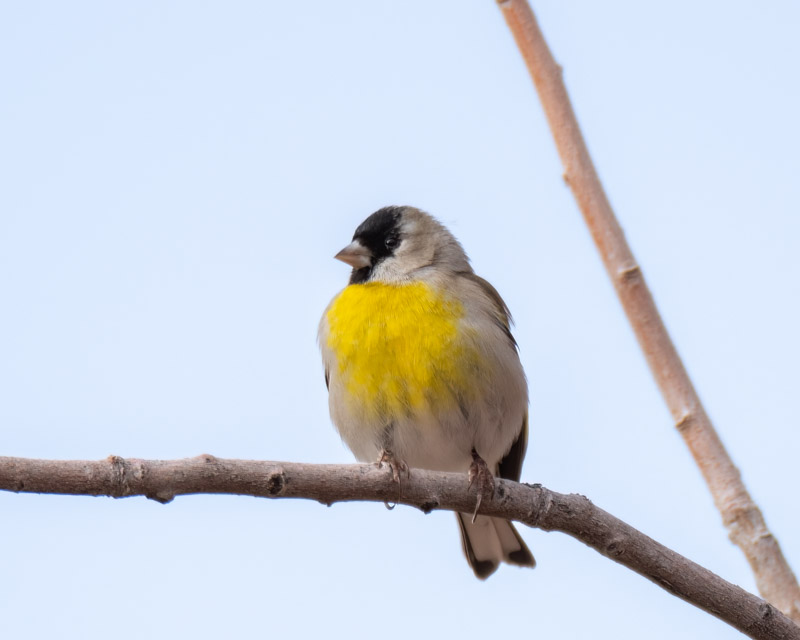
Lawrence’s Goldfinch have a slight notch or fork in their tails.
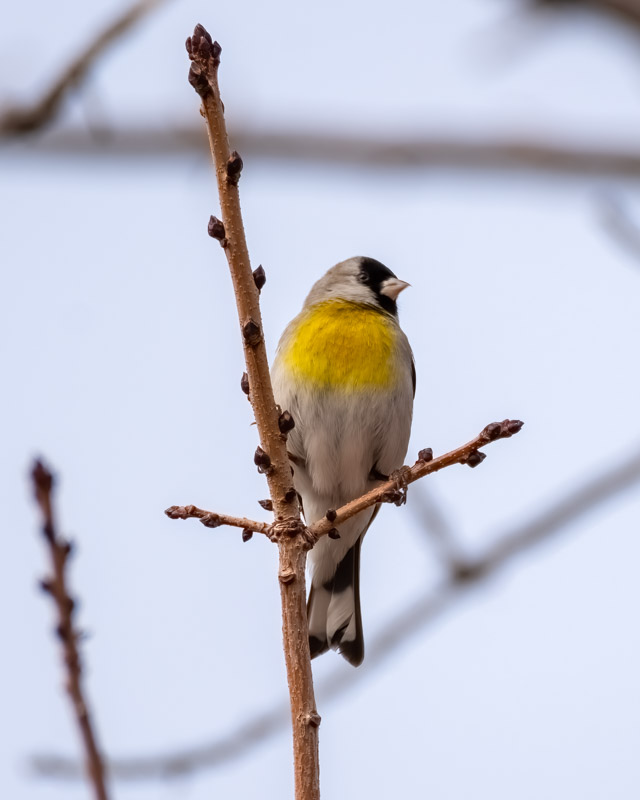
The small flock of goldfinches never stopped moving. They would show up at the tree I was standing by, feed for a minute or two, and then fly off quickly to other nearby trees, continuing to move from tree to tree to tree. Another fun fact: male Lawrence’s Goldfinches do not get their lemon yellow breeding plumage through molting. The feathers they have become yellower as they wear, shedding the brownish outer color and to expose the yellow parts of the feather beneath. No other goldfinches acquire breeding plumage in this manner.
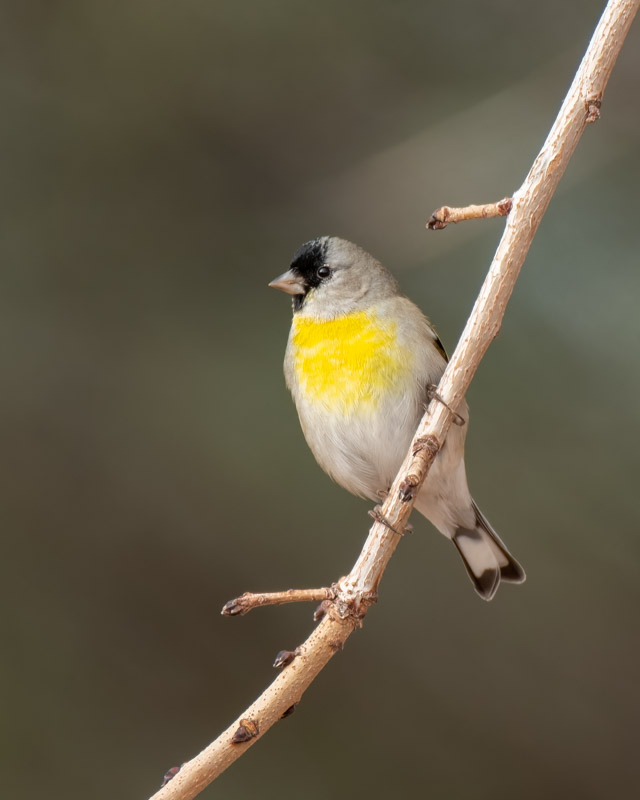
My favorite photo of the morning was this Lawrence’s in a perfect setting with its head tilted for a special ‘look’. The dark behind the bird is a neighboring tree.
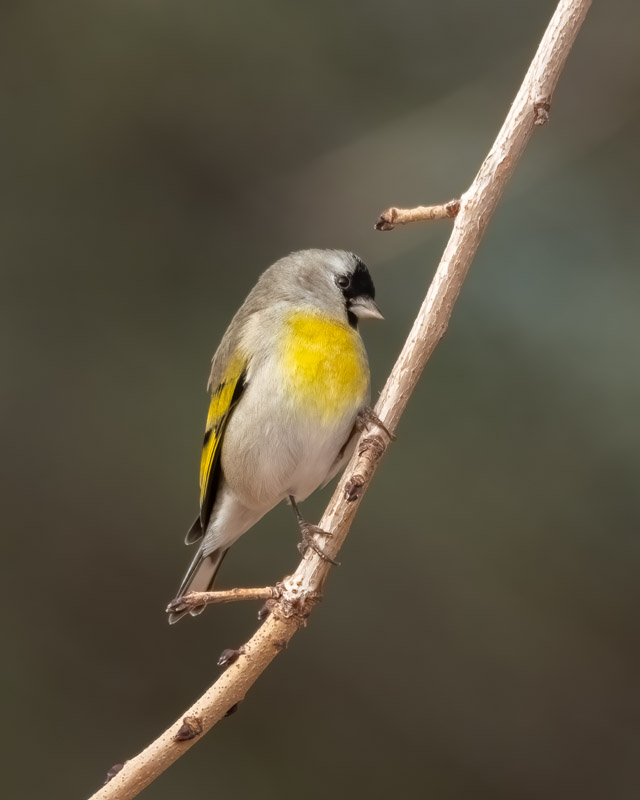
I did get my fill of Lawrence’s that morning but hope to see even more of them before they head out of Tucson in the early spring. Next up is a post with another special bird that was feeding alongside the Lawrence’s Goldfinches at Fort Lowell Park. It, too, is brightly colored but a very different color from the Lawrence’s Goldfinch.
